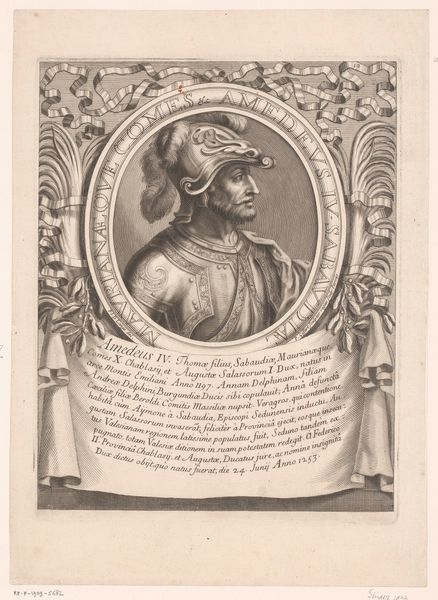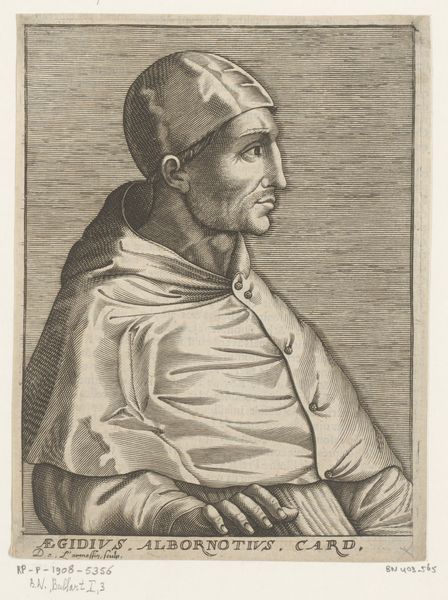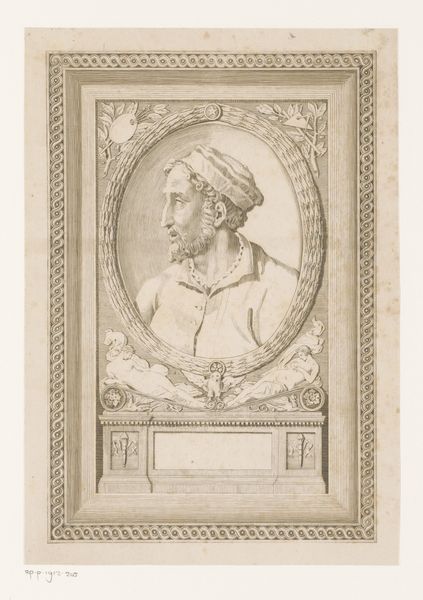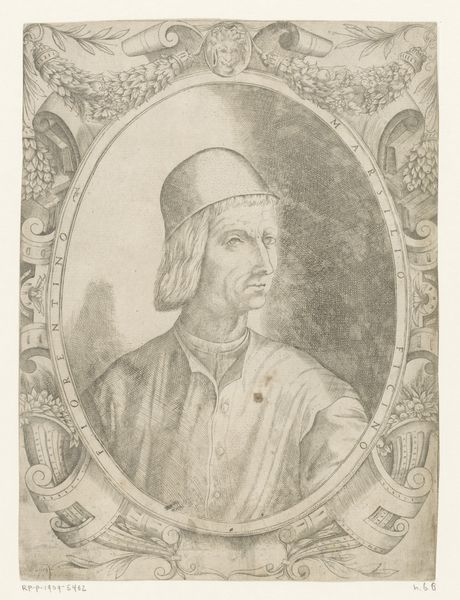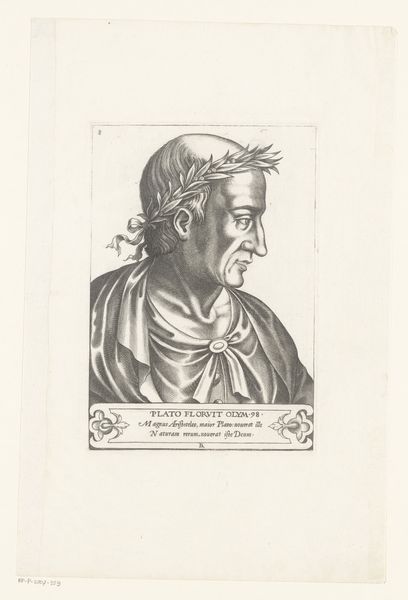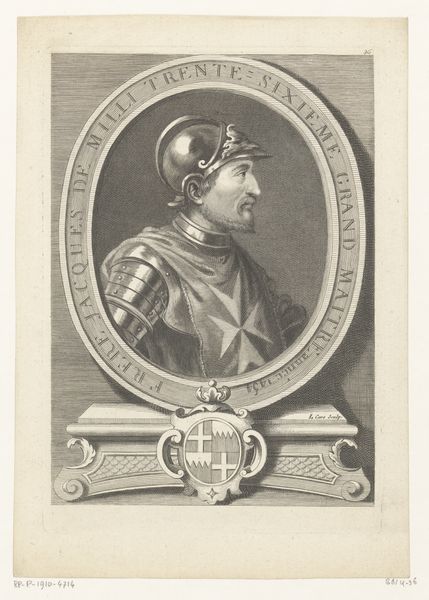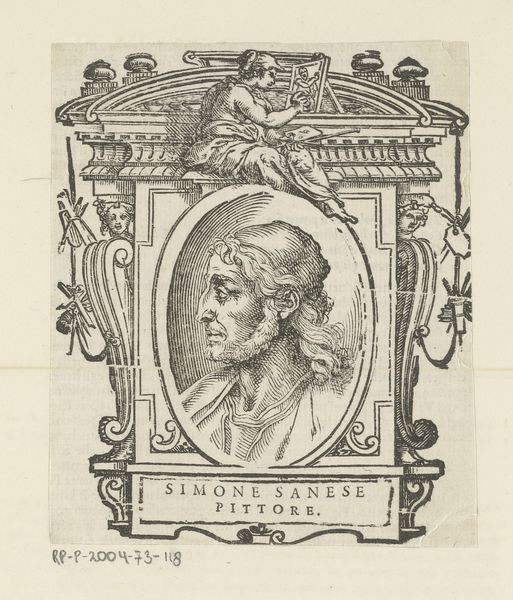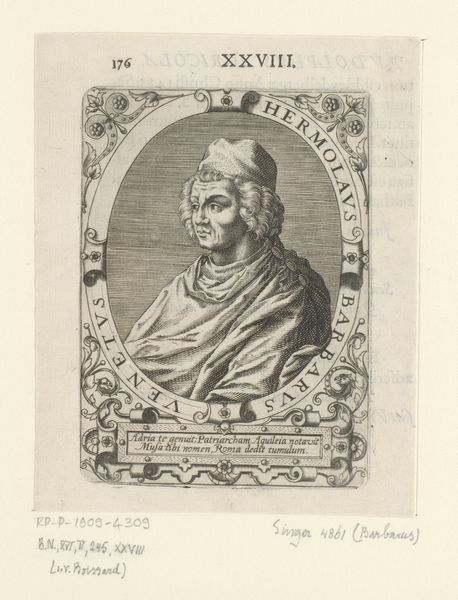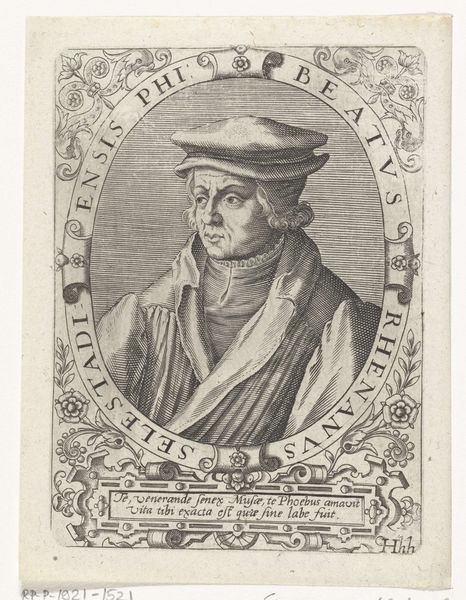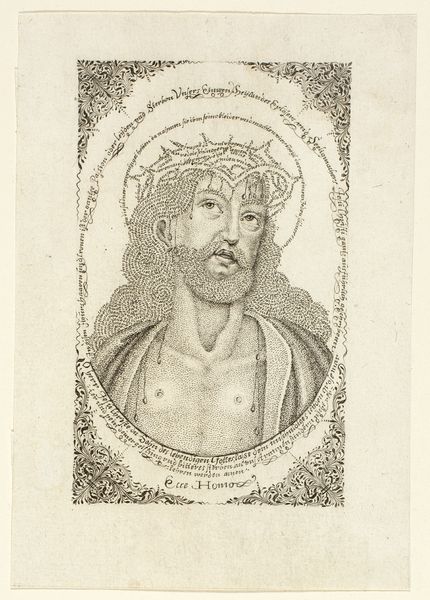
drawing, graphic-art, print, engraving
#
portrait
#
pencil drawn
#
drawing
#
graphic-art
#
aged paper
#
toned paper
#
light pencil work
# print
#
pencil sketch
#
old engraving style
#
pencil drawing
#
19th century
#
portrait drawing
#
pencil work
#
history-painting
#
italian-renaissance
#
engraving
Dimensions: height 216 mm, width 163 mm
Copyright: Rijks Museum: Open Domain
Enea Vico made this portrait of Dante Alighieri in the mid-16th century, using the intaglio printmaking technique. The image is created through precise lines incised into a metal plate, likely copper. This would have been a painstaking process, demanding meticulous skill. The plate is then inked, and the surface wiped clean, leaving ink only in the etched lines. When pressed onto paper, the image is transferred, resulting in the fine details and tonal variations we see here. Printmaking, unlike unique works such as painting or sculpture, allows for reproduction. This was critical in disseminating images and ideas during the Renaissance, fostering a wider appreciation for classical literature and portraiture. Although seemingly worlds apart, consider that techniques like this are the ancestors of mass media today. The choice of printmaking also speaks to broader social and economic shifts, a move toward democratizing images through the labour-intensive processes of craft.
Comments
No comments
Be the first to comment and join the conversation on the ultimate creative platform.

